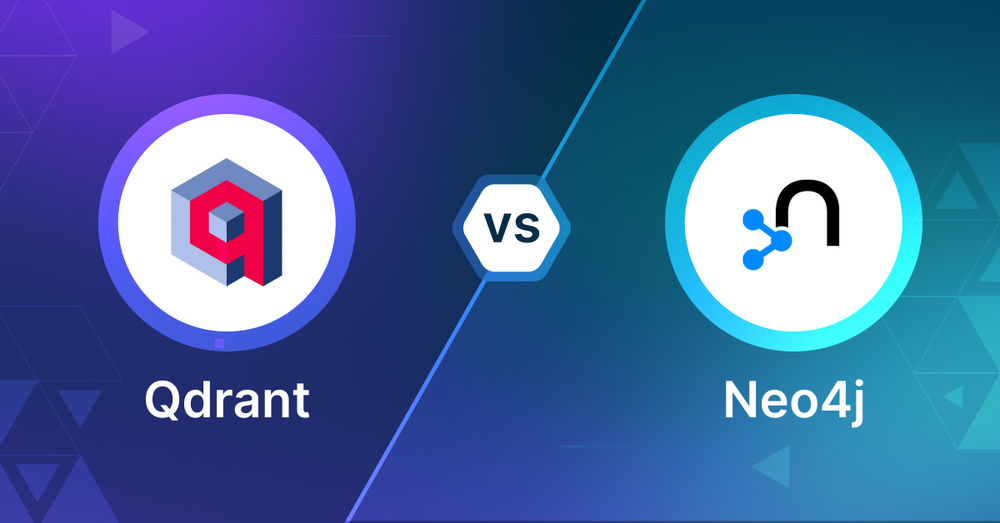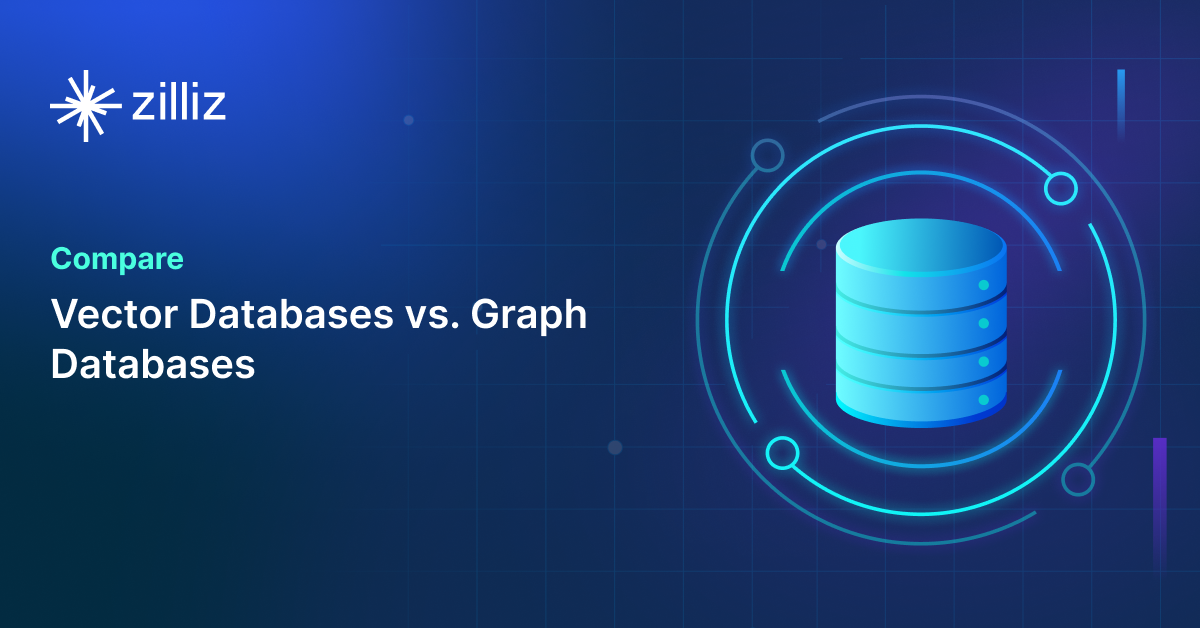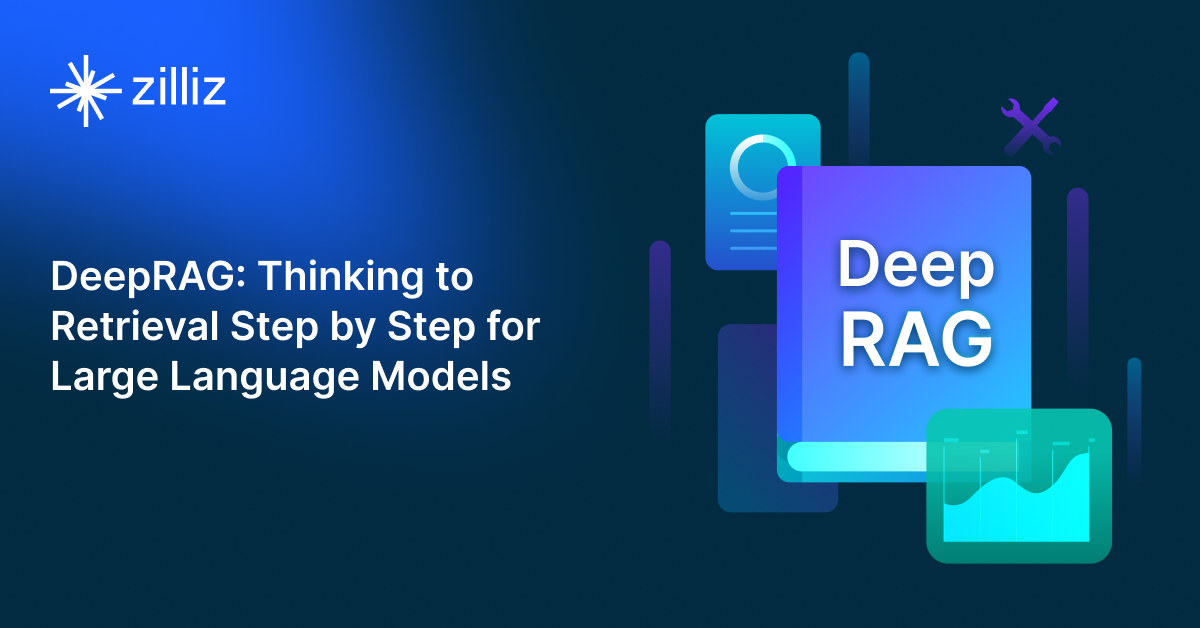Qdrant vs Neo4j Choosing the Right Vector Database for Your AI Apps

What is a Vector Database?
Before we compare Qdrant and Neo4j, let's first explore the concept of vector databases.
A vector database is specifically designed to store and query high-dimensional vectors, which are numerical representations of unstructured data. These vectors encode complex information, such as the semantic meaning of text, the visual features of images, or product attributes. By enabling efficient similarity searches, vector databases play a pivotal role in AI applications, allowing for more advanced data analysis and retrieval.
Common use cases for vector databases include e-commerce product recommendations, content discovery platforms, anomaly detection in cybersecurity, medical image analysis, and natural language processing (NLP) tasks. They also play a crucial role in Retrieval Augmented Generation (RAG), a technique that enhances the performance of large language models (LLMs) by providing external knowledge to reduce issues like AI hallucinations.
There are many types of vector databases available in the market, including:
- Purpose-built vector databases such as Milvus, Zilliz Cloud (fully managed Milvus)
- Vector search libraries such as Faiss and Annoy.
- Lightweight vector databases such as Chroma and Milvus Lite.
- Traditional databases with vector search add-ons capable of performing small-scale vector searches.
Qdrant is a purpose-built vector database. Neo4j is a graph database with vector search capabilities as an add-on. This post compares their vector search capabilities.
Qdrant: Overview and Core Technology
Qdrant is a vector database for similarity search and machine learning. Built from the ground up for vector data, it’s the go to choice for AI developers. Qdrant optimizes performance and can handle high dimensional vector data which is key for many modern ML models.
One of the key strengths of Qdrant is its flexible data modeling. You can store and index not just vectors but also payload data associated with each vector. This means you can run complex queries that combine vector similarity with filtering on metadata, so you can have more powerful and nuanced search. Qdrant ensures data consistency with ACID compliant transactions even during concurrent operations.
Qdrant’s vector search is at the heart of the platform. It uses a custom version of the HNSW (Hierarchical Navigable Small World) algorithm for indexing which is efficient in high dimensional spaces. The Distance Matrix API allows to calculate efficiently pairwise distances between vectors, so it’s great for tasks like clustering and dimensionality reduction - even with thousands of vectors. For scenarios where precision matters more than speed, Qdrant also supports exact search and provides visual tools to explore vector relationships through the Graph UI.
What’s special about Qdrant is its query and optimization features. Its query language works seamlessly with vector search and supports complex operations including a powerful Facet API to aggregate and count unique values in the data. Memory optimization features like on-disk text and geo indexing allow to handle large scale deployments while keeping performance through intelligent caching. Qdrant has automatic sharding and replication for scalability and supports various data types and query conditions from string matching to numerical ranges and geo-locations. The scalar, product and binary quantization features can reduce memory usage and speed up search, especially for high dimensional vectors.
You can configure the trade off between search precision and performance with both approximate and exact matching depending on your use case. The architecture is designed for real world scenarios where vector search needs to be combined with filtering and aggregation, so it’s great for building practical AI applications.
Neo4J: The Basics
Neo4j’s vector search allows developers to create vector indexes to search for similar data across their graph. These indexes work with node properties that contain vector embeddings - numerical representations of data like text, images or audio that capture the meaning of the data. The system supports vectors up to 4096 dimensions and cosine and Euclidean similarity functions.
The implementation uses Hierarchical Navigable Small World (HNSW) graphs to do fast approximate k-nearest neighbor searches. When querying a vector index, you specify how many neighbors you want to retrieve and the system returns matching nodes ordered by similarity score. These scores are 0-1 with higher being more similar. The HNSW approach works well by keeping connections between similar vectors and allowing the system to quickly jump to different parts of the vector space.
Creating and using vector indexes is done through the query language. You can create indexes with the CREATE VECTOR INDEX command and specify parameters like vector dimensions and similarity function. The system will validate that only vectors of the configured dimensions are indexed. Querying these indexes is done with the db.index.vector.queryNodes procedure which takes an index name, number of results and query vector as input.
Neo4j’s vector indexing has performance optimizations like quantization which reduces memory usage by compressing the vector representations. You can tune the index behavior with parameters like max connections per node (M) and number of nearest neighbors tracked during insertion (ef_construction). While these parameters allow you to balance between accuracy and performance, the defaults work well for most use cases. The system also supports relationship vector indexes from version 5.18, so you can search for similar data on relationship properties.
This allows developers to build AI powered applications. By combining graph queries with vector similarity search applications can find related data based on semantic meaning not exact matches. For example a movie recommendation system could use plot embedding vectors to find similar movies, while using the graph structure to ensure the recommendations come from the same genre or era as the user prefers.
Key Differences
Core Technology and Search Methodology
Both Qdrant and Neo4j use Hierarchical Navigable Small World (HNSW) algorithm for vector search but each has its own implementation. Qdrant has developed a custom HNSW for high-dimensional vector spaces. This includes a Distance Matrix API that calculates pairwise distances between vectors efficiently, which is perfect for clustering and dimensionality reduction.
Neo4j takes a different approach, supports vectors up to 4,096 dimensions with both cosine and Euclidean similarity functions. Their implementation focuses on integrating vector search with graph queries so you can combine semantic similarity searches with structural relationships in your data. This is powerful when you need to consider both content similarity and relationships between data points.
Data Handling and Architecture
Qdrant is great for flexible data modeling, you can store vectors alongside payload data. This means you can create complex queries that combine vector similarity with metadata filtering. The system maintains data consistency through ACID compliant transactions so it's reliable even during concurrent operations. Qdrant is strong for applications that need to maintain complex relationships between vectors and their metadata.
Neo4j handles data through its graph architecture. With vector indexes on node and relationship properties (introduced in 5.18) you can search for similar data while leveraging the underlying graph structure. This is great when understanding relationships between data points is as important as finding similar vectors.
Performance and Scalability
Qdrant performance is optimized through several mechanisms. The system has automatic sharding and replication for distributed workloads, on-disk text and geo indexing for large datasets and intelligent caching for frequently accessed data. Qdrant also offers scalar, product and binary quantization to reduce memory usage without compromising search quality.
Neo4j optimizes performance through vector quantization which compresses vector representations to reduce memory footprint. The system allows to fine tune parameters like max connections per node and nearest neighbors during insertion so you can find the right balance between search accuracy and performance for your use case.
Query Capabilities and Search Features
Qdrant query system is built for vector search operations. The query language integrates well with vector search and has a powerful Facet API to aggregate and count unique values in your data. The system supports various data types and query conditions, both approximate and exact matching. This allows you to combine vector search with traditional filtering and aggregation operations.
Neo4j queries are centered around its graph database heritage. Vector search is implemented through the db.index.vector.queryNodes procedure which integrates well with Neo4j's graph query language. This allows you to combine graph traversal queries with vector similarity searches and get results with similarity scores from 0 to 1. The relationship vector indexes further allows you to find similar patterns in graph relationships.
Qdrant vs Neo4j: A Practical Comparison for Vector Search
When building AI applications, the choice of vector search tool can make or break your project. Both Qdrant and Neo4j are great solutions, but they approach vector search from different directions. Understanding these differences will help you choose the best for you.
Core Technology and Search Methodology
At the core both Qdrant and Neo4j use Hierarchical Navigable Small World (HNSW) algorithm for vector search, but each has its own implementation. Qdrant has its own custom HNSW implementation for high-dimensional vector spaces. This includes Distance Matrix API that calculates pairwise distances between vectors efficiently, which is perfect for clustering and dimensionality reduction.
Neo4j takes a different approach, supports vectors up to 4096 dimensions with both cosine and Euclidean similarity functions. Their implementation focuses on integrating vector search with graph queries, so you can combine semantic similarity searches with structural relationships in your data. This is especially powerful when you need to consider both content similarity and relationships between data points.
Data Handling and Architecture
Qdrant is great at flexible data modeling, you can store vectors alongside payload data. This means you can create complex queries that combine vector similarity with metadata filtering. The system maintains data consistency through ACID compliant transactions, so it’s reliable even during concurrent operations. This architecture makes Qdrant perfect for applications that need to maintain complex relationships between vectors and their metadata.
Neo4j handles data through its graph architecture. With support for vector indexes on node and relationship properties (introduced in 5.18) you can search for similar data while using the underlying graph structure. This is perfect for scenarios where understanding relationships between data points is as important as finding similar vectors.
Performance and Scalability
Qdrant performance is optimized through several mechanisms. The system has automatic sharding and replication for distributed workloads, on-disk text and geo indexing for large datasets and intelligent caching for frequently accessed data. Qdrant also offers scalar, product and binary quantization to reduce memory usage without compromising search quality.
Neo4j optimizes performance through vector quantization which compresses vector representations to reduce memory footprint. The system allows to fine tune parameters like max connections per node and nearest neighbors during insertion so you can find the right balance between search accuracy and performance for your use case.
Query Capabilities and Search Features
Qdrant query system is built for vector search operations. The query language is integrated with vector search and has powerful Facet API to aggregate and count unique values in your data. The system supports various data types and query conditions, both approximate and exact matching. This flexibility allows you to combine vector search with traditional filtering and aggregation operations.
Neo4j query approach is centered around its graph database heritage. Vector search is implemented through the db.index.vector.queryNodes procedure which is integrated with Neo4j’s graph query language. This integration allows you to combine graph traversal queries with vector similarity searches and get results with similarity scores from 0 to 1. The addition of relationship vector indexes makes it even better to find similar patterns in graph relationships.
When to Choose Qdrant
Qdrant is the right choice when your main focus is on vector similarity search and you need to handle large scale high dimensional vector data. It’s perfect for scenarios where you’re building AI powered search engines, recommendation systems or content discovery platforms that require fast similarity search with complex filtering - for example large scale image similarity search system, semantic document retrieval service or product recommendation engine that needs to handle millions of items with complex attribute filtering.
When to Choose Neo4j
Neo4j is the right choice when your application needs to understand and use relationships between data points and vector similarity. It’s perfect for applications where graph traversal and relationship analysis is central to your use case - for example knowledge graphs with semantic search, fraud detection systems that combine pattern recognition with similarity search or social network analysis tools that need to consider both user similarities and connection patterns.
Conclusion
Both have robust vector search capabilities but serve different primary needs - Qdrant is perfect for pure vector search scenarios with high performance requirements, Neo4j shines when you need to combine vector similarity with graph relationships. Your choice should depend on your specific needs: choose Qdrant if vector search is your main concern and you need specialized performance optimizations or choose Neo4j if you need to leverage graph relationships with vector similarity search. Consider your existing infrastructure, team expertise and if you’ll benefit from additional graph database features when making your decision.
Read this to get an overview of Qdrant and Neo4j but to evaluate these you need to evaluate based on your use case. One tool that can help with that is VectorDBBench, an open-source benchmarking tool for vector database comparison. In the end, thorough benchmarking with your own datasets and query patterns will be key to making a decision between these two powerful but different approaches to vector search in distributed database systems.
Using Open-source VectorDBBench to Evaluate and Compare Vector Databases on Your Own
VectorDBBench is an open-source benchmarking tool for users who need high-performance data storage and retrieval systems, especially vector databases. This tool allows users to test and compare different vector database systems like Milvus and Zilliz Cloud (the managed Milvus) using their own datasets and find the one that fits their use cases. With VectorDBBench, users can make decisions based on actual vector database performance rather than marketing claims or hearsay.
VectorDBBench is written in Python and licensed under the MIT open-source license, meaning anyone can freely use, modify, and distribute it. The tool is actively maintained by a community of developers committed to improving its features and performance.
Download VectorDBBench from its GitHub repository to reproduce our benchmark results or obtain performance results on your own datasets.
Take a quick look at the performance of mainstream vector databases on the VectorDBBench Leaderboard.
Read the following blogs to learn more about vector database evaluation.
Further Resources about VectorDB, GenAI, and ML
- What is a Vector Database?
- Qdrant: Overview and Core Technology
- Neo4J: The Basics
- Key Differences
- Core Technology and Search Methodology
- Data Handling and Architecture
- Performance and Scalability
- Query Capabilities and Search Features
- When to Choose Qdrant
- When to Choose Neo4j
- Conclusion
- Using Open-source VectorDBBench to Evaluate and Compare Vector Databases on Your Own
- Further Resources about VectorDB, GenAI, and ML
Content
Start Free, Scale Easily
Try the fully-managed vector database built for your GenAI applications.
Try Zilliz Cloud for FreeKeep Reading

Zilliz Cloud Launches in AWS Australia, Expanding Global Reach to Australia and Neighboring Markets
We're thrilled to announce that Zilliz Cloud is now available in the AWS Sydney, Australia region (ap-southeast-2).

Vector Databases vs. Graph Databases
Use a vector database for AI-powered similarity search; use a graph database for complex relationship-based queries and network analysis.

DeepRAG: Thinking to Retrieval Step by Step for Large Language Models
In this article, we’ll explore how DeepRAG works, unpack its key components, and show how vector databases like Milvus and Zilliz Cloud can further enhance its retrieval capabilities.
The Definitive Guide to Choosing a Vector Database
Overwhelmed by all the options? Learn key features to look for & how to evaluate with your own data. Choose with confidence.